Track Clinic: Everything You Need to Know to Master Mid-Ohio Sports-Car Course
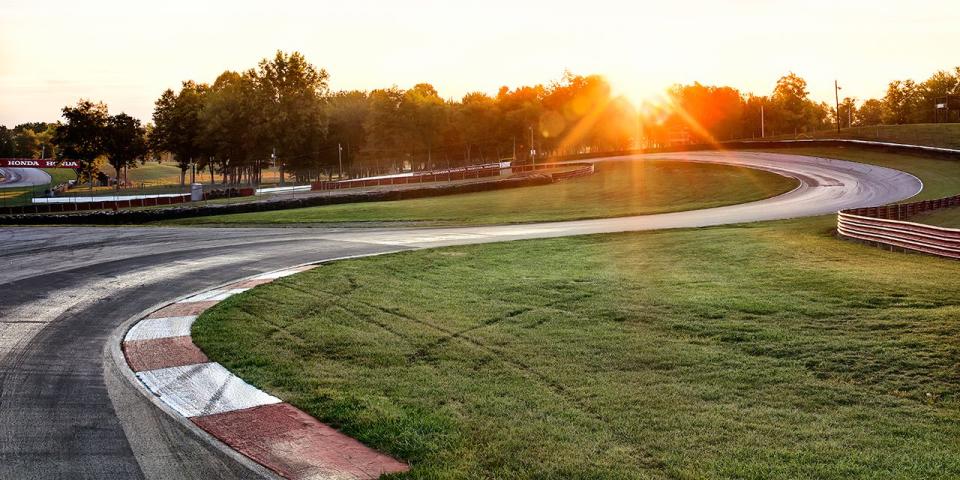
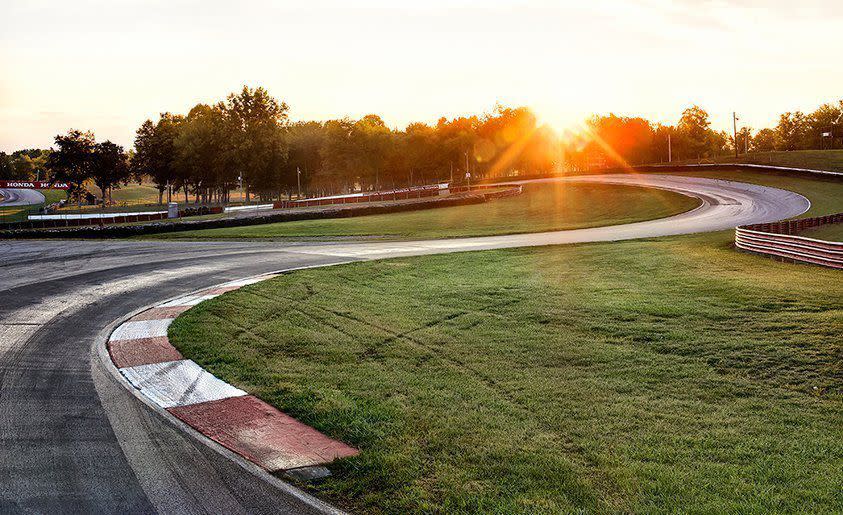
From the December 2015 issue
Situated just 61 miles north of Columbus, the state capital, Mid-Ohio is a great road-racing track for three reasons. First and foremost, it’s challenging, combining undulating terrain with deviously interrelated corners. Second, Mid-Ohio is an excellent facility, with practical garages, lush green lawns, and clean and comfortable restrooms. Many tracks provide these amenities today, but Mid-Ohio had them decades ago, when most tracks were still using outhouses. Third, at Mid-Ohio, an amateur can experience the same track used by the top road racers in the country. When has anyone ever gotten their Mk2 Volkswagen GTI sideways at Spa?
History
Mid-Ohio was constructed in 1962 on a couple hundred acres of rolling hills near Lexington, Ohio, by Les Griebling, a successful local farmer who personally drove the road grader that laid out the original course. The track cost a piddling $250,000 to build, including the land, mostly because Griebling put in so much sweat equity.
The first event was in August 1962, and thanks to its proximity to Cleveland, Columbus, Cincinnati, and Detroit, the track soon started attracting professional races. In 1963, it hosted a United States Road Racing Championship event, which was the precursor to the legendary Can-Am series. It started holding Trans-Am races in ’67, and the Can-Am series added Mid-Ohio to its schedule in ’69.
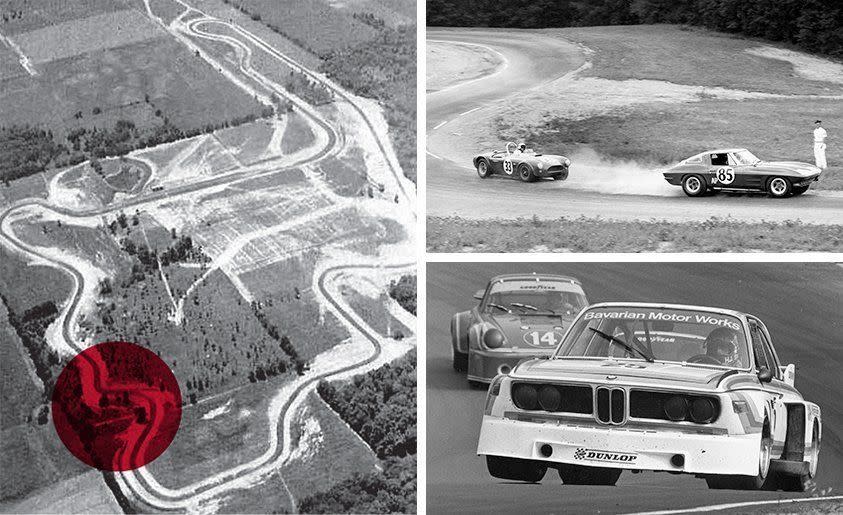
The original track spread 15 corners over 2.4 miles, and the layout hasn’t changed much over the past six decades. Though the track has been resurfaced a number of times and widened slightly, to 40 feet, the only recent major change to its geography came in 1990, when a straight-through bypass was added near the chicane after Turn 1. This eliminated two corners and shaved about an eighth of a mile, dropping a lap of the track to 2.26 miles. This is generally regarded as the “pro” configuration, while the older layout is now the “club” circuit.
Since 2011, the track has been owned by Green Savoree Racing Promotions, which has upheld Mid-Ohio’s distinction as a beautifully maintained and highly challenging race course.
Lap Map
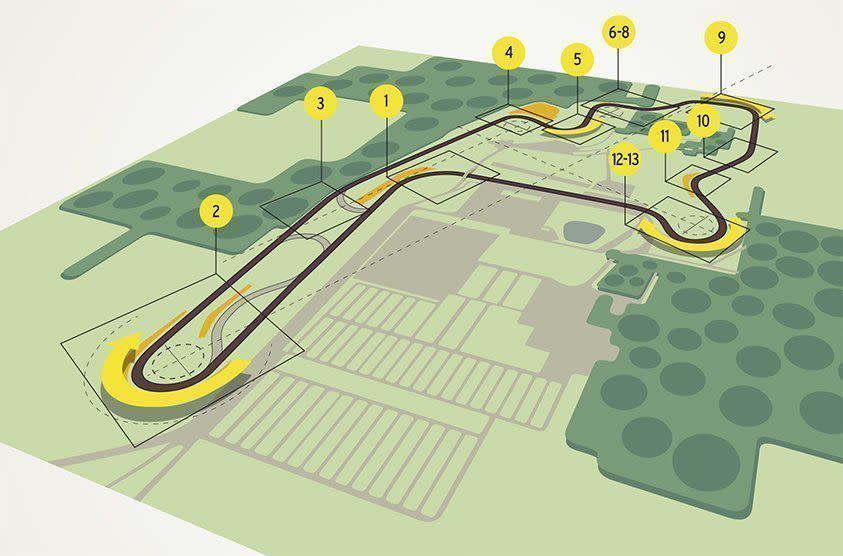
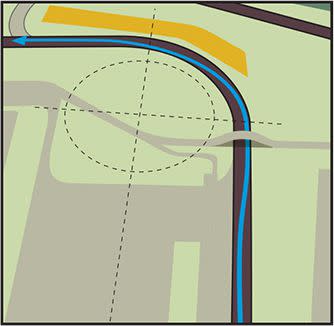
Turn 1
A long, 90-degree left coming off the pit straight, this is the fastest turn on the track. Approach from the right and you’ll only need light braking—or just a lift in some formula cars. Turn in after the abutment for the bridge passing over the track and apex about three-quarters of the way around the curb that separates the racing surface from the pit-exit lane. That lane might look attractive, but it is neither safe nor permissible to use while lapping.

Turn 2: Keyhole
In the pro configuration, it’s a straight run from the Turn 1 exit to the Keyhole, which consists of two 90-degree rights. While it is possible to make one single turn out of the Keyhole with a late apex in the second right, most drivers treat it as a double-apex corner. Either way, brake hard before the crest near the first apex, while you have good grip. This is a common passing zone, so enter between the middle and left side of the track to defend your line. With the double-apex line, the key is to not go too far to the left between the apexes. The pavement there is slippery. Let the car settle down after the slight crest and almost coast in the middle or you won’t make the second apex. Missing it is a big mistake as the exit leads onto the long back straight—easily the track’s fastest section.
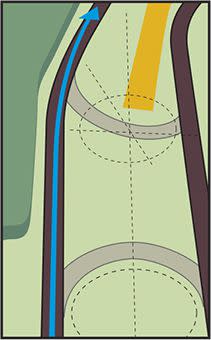
Turn 3
This right-hand kink is almost always taken flat in the dry, but can be slippery in the rain and might require a lift.
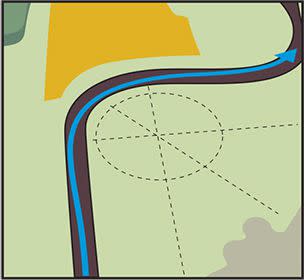
Turn 4
You arrive at Turn 4 with lots of speed (Indy cars come in at about 180 mph); brake heavily as you enter this right-hander from the left. There’s a lot of camber running the full width of the track, so you have some flexibility for your line, which makes this a great corner for passing.

Turn 5
This longish left-hander goes up, over, and down a steep hill. Enter from the left, where the exit of Turn 4 placed you, and simply apex at the crest of the hill. Once the car is settled after the crest, you can accelerate toward 6 while steering left. Attempt to keep too far to the left and your car will likely get unsettled, opening you up to being passed on the right going into 6.
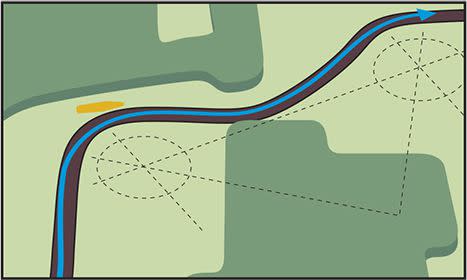
Turns 6, 7, and 8: The Esses
These three corners are linked, so the correct line is critical. A little trail-braking will help plant your car’s front end and point it toward the apex on the right near the end of the curbing. But the key here, as in 5, is not to track out too far on the exit. Stay about a car’s width from the left edge of the track and you’ll be well set up for Turn 7. Apex 7 at the end of the curbing, before the hill, and be careful with the power as you crest it. As soon as the car settles down, turn in for 8. You can miss the apex here slightly as your key concern on exit will be the next corner. Following the right line, 7 and 8 are generally flat in a street car.
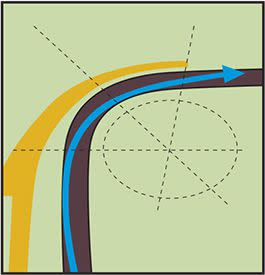
Turn 9
There’s not enough distance from the exit of 8 to get all the way to the left and parallel to the track edge before you have to start braking for 9. The solution is to go left but forget about getting parallel. This stretches the 90-degree turn into a 95-degree one, but at least you get to brake in a straight line with a settled car. Turn 9 climbs another hill, so apex late but before the crest. Then you can start getting on the gas, though your car will still get light and drift to the left as you hurtle over the top.

Turn 10
A fast, flat bend to the right, and then it’s best to stay to the right coming out to help your entrance into 11.
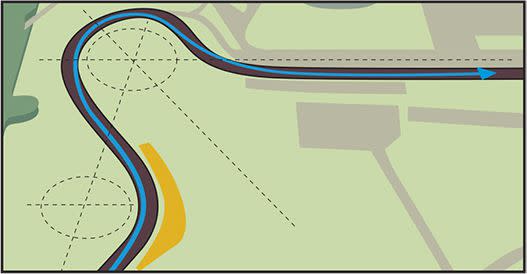
Turns 11, 12, and 13: Carousel
Turn 11 is a fast, off-camber left-hander. A tap of the brakes will help you stick close to the inside curbing. The key is to come out of 11 on a straight line so that you can brake hard going into Turn 12, the Carousel. Treat the Carousel as a double-apex corner, with the first apex at the small crest, which requires you to ease your braking as your car’s tires unload. Continue about three-quarters of the way across the track before turning toward the second apex. Once you’re there, hold the car to the right to set up for the left-hand Turn 13, a slight bend that leads onto the front straight. Stray no farther left than the middle of the track and you’ll be okay.
What to Drive
Chevrolet Corvette: Just about any vintage of Vette will provide plenty of power and grip to make for an interesting lap.
Porsche 911 GT3: The GT3 has the goods to turn even the fast bends into serious corners. With higher corner-entry speeds, you’ll have to maintain a precise line to allow late braking.
Subaru WRX: This four-wheel-drive sports sedan’s stability makes it ideal for learning the track. But it’s also fast enough to keep your education interesting.

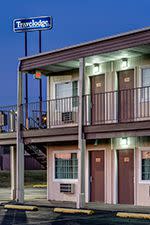
Where to Stay
$—Travelodge, Mansfield: Very basic accommodations for those choosing between tires and a roof over their heads.
$$—The Paddock Inn, Lexington: A B&B, right in town and universally acclaimed, but it gets booked up early.
$$—Wishmaker House, Bellville: Another well-loved B&B, less than 10 miles from the track.
Lap Records
The variety of racing machinery that competes at Mid-Ohio is reflected in the range of its lap records:
1:04.58: IndyCar, Scott Dixon, Chevrolet, 2015
1:08.54: American Le Mans Series, Marco Werner, Audi R10 TDI, 2008
1:16.50: Rolex Sports Car Series, Jon Fogarty, Chevrolet Riley, 2011
1:21.24: Trans-Am Series, Tomy Drissi, Chevrolet Corvette, 2013
1:24.45: Nascar Nationwide Series, Michael McDowell, Toyota, 2013
1:42.75: Spec Miata, Brian Murdick, Mazda Miata, 2013
You Might Also Like

 Yahoo Autos
Yahoo Autos 